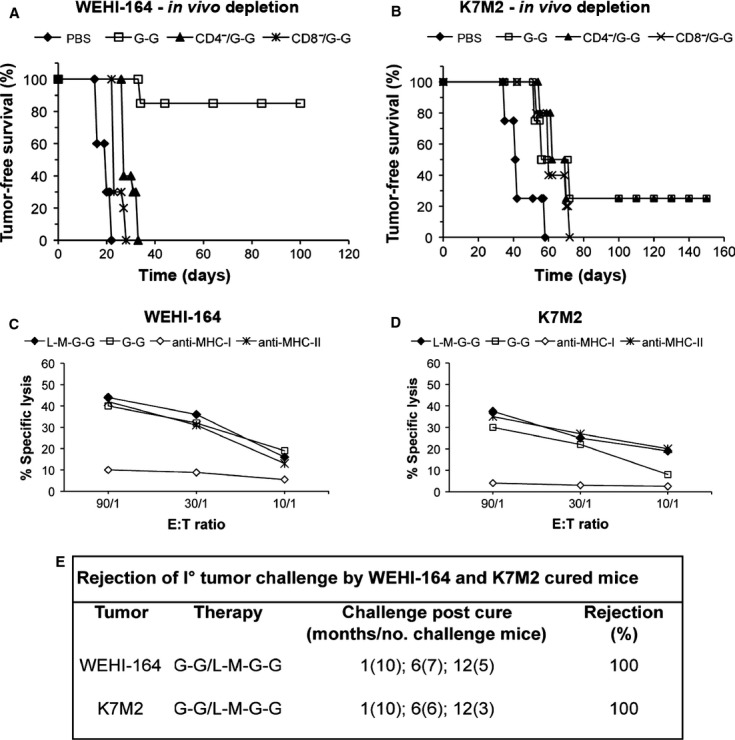Figure 2.

Immune population involved in WEHI-164 and K7M2 tumor eradication in in vivo-depleted mice. Tumor-free survival curves (%) versus time (days) of the WEHI-164 and K7M2 tumor-bearing mice subjected to G-G treatment, in vivo depleted with antibodies direct with CD4+ or CD8+ T cells as described in the Materials and Methods section. The tumor-free survival of groups of five WEHI-164 (A) and K7M2 (B) tumor-bearing mice subjected to G-G treatment (open squares), co-CD4-depleted (black triangles), co-CD8-depleted (black asterisks), or untreated tumor-bearing mice (black diamonds) is indicated. Specific cytolytic activity of the immune splenocytes after WEHI-164 and K7M2 tumor cure and persistence of antitumor memory. Specific lysis (%) of WEHI-164 (C) and K7M2 (D) cells by different E:T ratio of splenocytes from WEHI-164- and K7M2-cured mice at 6 months after G-G (open squares) or L-M-G-G (black diamonds) treatment and after s.c. tumor challenge. The specific lysis is totally inhibited by anti-MHC class I antibodies (open diamonds) and unaffected by anti-MHC class II antibodies (black asterisks). Results are representative of three independent 51Chromium-release experiments with similar results. (E) The ability of WEHI-164- and K7M2-cured mice subjected to G-G and L-M-G-G treatments to reject the first tumor challenge at different times post cure. The number of challenged mice is indicated in round brackets.
